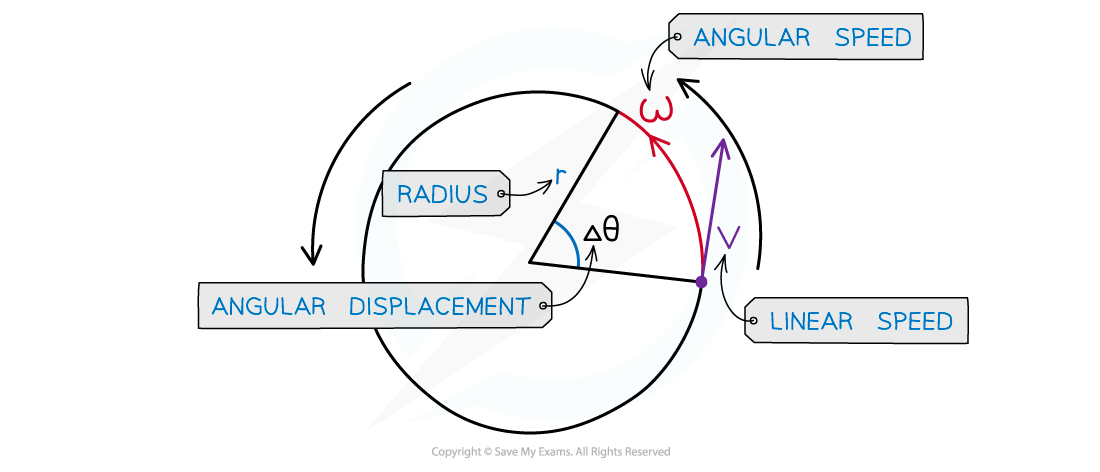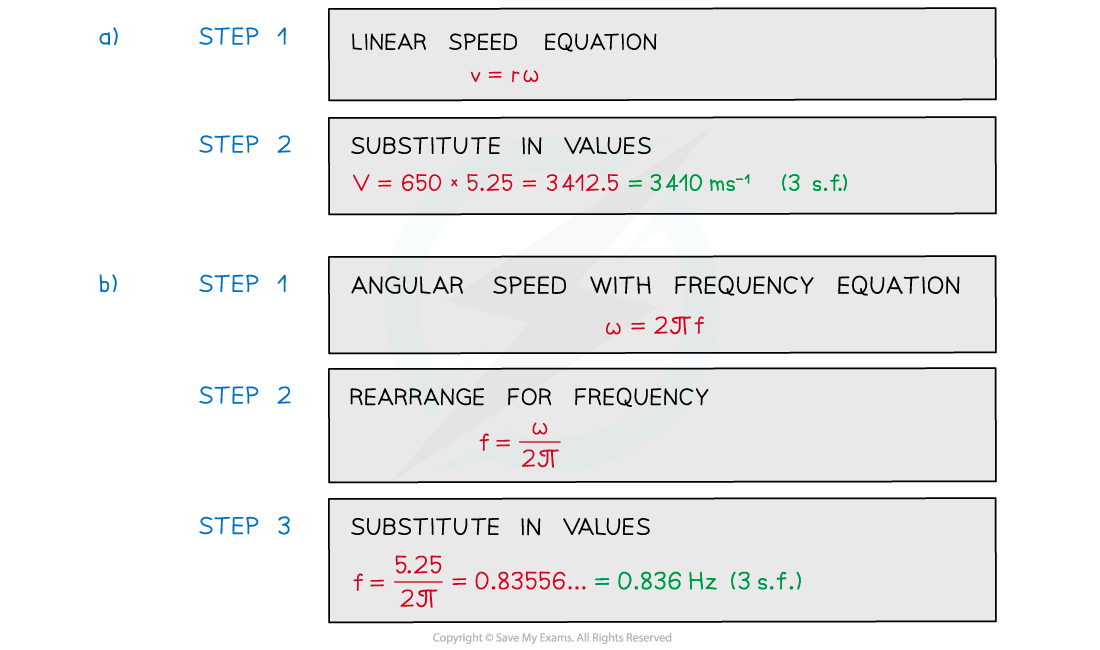Angular Speed (AQA A Level Physics) : Revision Note
Angular Speed
Any object travelling in a uniform circular motion at the same speed travels with a constantly changing velocity
This is because it is constantly changing direction, and is therefore accelerating
The angular speed (⍵) of a body in circular motion is defined as:
The rate of change in angular displacement with respect to time
Angular speed is a scalar quantity and is measured in rad s-1
It can be calculated using:

Where:
Δθ = change in angular displacement (radians)
Δt = time interval (s)

When an object is in uniform circular motion, velocity constantly changes direction, but the speed stays the same
Taking the angular displacement of a complete cycle as 2π, the angular speed ⍵ can be calculated using the equation:

Where:
v = linear speed (m s-1)
r = radius of orbit (m)
T = the time period (s)
f = frequency (Hz)
Angular velocity is the same as angular speed, but it is a vector quantity
This equation shows that:
The greater the rotation angle θ in a given amount of time, the greater the angular velocity ⍵
An object rotating further from the centre of the circle (larger r) moves with a smaller angular velocity (smaller ⍵)
Worked Example
A bird flies in a horizontal circle with an angular speed of 5.25 rad s−1 of radius 650 m.
Calculate:
a) The linear speed of the bird
b) The frequency of the bird flying in a complete circle
Answer:


You've read 0 of your 5 free revision notes this week
Sign up now. It’s free!
Did this page help you?
